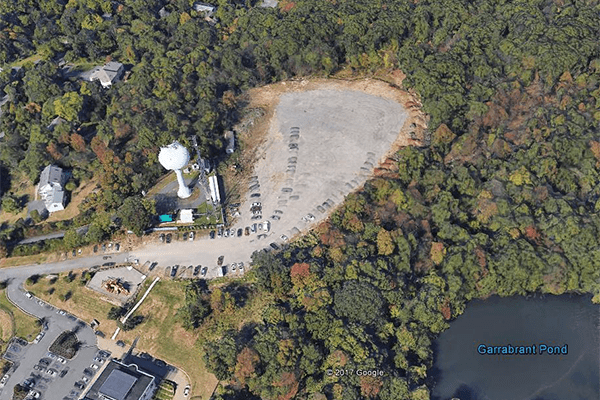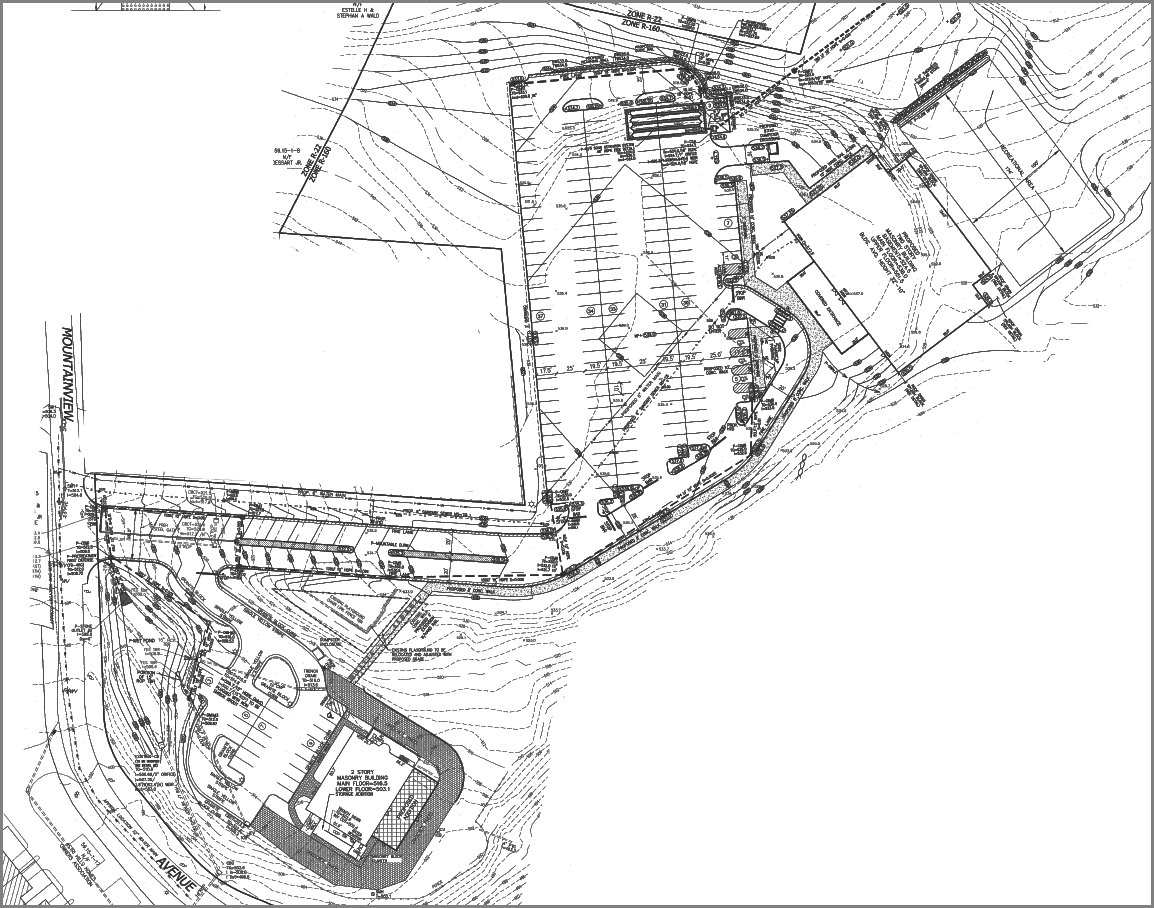|
RCBJ-Audible (Listen For Free)
|
Clarkstown Zoning Code Permits Houses Of Worship In Residential Zones, But Only On State & County Roads; The Islamic Center of Rockland’s Massive Expansion Will Need Zoning Variances, Other Approvals
REAL ESTATE NEWS
In March 2016, the Town of Clarkstown unanimously passed a local law amending Chapter 290 (Zoning) of the Town Code. The new regulations say that certain permitted “non-residential” uses in residential zones, including houses of worship, must be located on a state or county road.
This law, yet untested, will take center stage when the Islamic Center of Rockland (ICR) appears at Clarkstown’s Planning Board on Wed. at 7 pm, to ask for permission to build a 30,000 square-foot building on the mosque’s property on Mountainview Avenue in Valley Cottage. Before the Planning Board can greenlight the project, however, the applicant will need to go before the Zoning Board of Appeals because the existing use is already “non-conforming,” and an expansion of that non-conforming use requires zoning and planning approval.
Although the applicant says: “the use is permitted or allowed by a special or conditional use permit,” that representation runs counter to the provisions in the town’s zoning code, which requires a use variance because a non-residential use in not permitted on this piece of property. Mountainview Avenue is a “secondary road,” not a county or state road on the town’s official map.
If the Zoning Board of Appeals were to grant a variance, it would effectively open residential districts to houses of worship town-wide.
The project also plans “land disturbance” of more than six acres, making the proposal a Type I action under SEQRA (State Environmental Quality Review Act); this would force the Planning Board to take a harder look at the environmental impact of the mountaintop project in the town’s R-160 conservation zone.
The application is also likely to draw ire from residents along Mountainview Avenue and the surrounding neighborhood because the road is a winding, precipitous, and a dangerously traversed road that sits between Christian Herald Road and Route 59, and the entrance to southbound entrance to I-87. Because of the nature of the road, it was recently closed to trucks over three tons (except for local deliveries).
On its application, the ICR acknowledges its project will result in “a substantial increase in traffic — mornings, evenings and weekends.”
Residents living within 300 feet of the mosque received notification of the Planning Board meeting. However, the Planning Board has recently issued notification to residents within 1,000 feet of other proposed projects, including a large warehouse building off Route 303 in Valley Cottage, as well as information sessions held to talk about the future of the Rockland Country Day School in Congers.
The Islamic Center of Rockland (ICR) built the mosque two decades ago on land zoned for conservation, known as R-160 in the town code. Through its landowner the Rockland Muslim Trust, Inc., the mosque is proposing to expand its 10,000 square-foot facility into a far more extensive compound by adding a 1,750 square-foot addition and constructing a two-story, 32-foot high, 29,200 square- foot, masonry building dug into the mountainside. Adjacent to this new superstructure are plans for a 17,500 square foot “recreation area” and next to that, parking for more than 200 cars.
The new building will have classrooms, offices, gymnasium, and prayer areas for bigger events. There is also a proposed addition to the existing building. The addition will extend only to the lower level with a floor area of 1,745 square feet, which will be used to accommodate more room for students and parents for the Sunday School
The impetus for adopting the local town law emanated from goals set in the updated Comprehensive Town Plan. These goals include preserving the suburban and remaining semi-rural character of the town, developing zoning and building regulations that reduce or restrict odors, sounds, commercial traffic, light pollution and other negative environmental impacts on residential area, and expanding initiatives to safeguard neighborhoods from inappropriately scaled development.
What the ICR is proposing is essentially the equivalent of building a structure the size of a supermarket onto a narrow and dangerous mountain road that already is overbuilt with two condo and townhouse complexes, as well as historic houses dating back to the 1800s.
The Islamic Center of Rockland was formed in 1989 when it purchased 15 acres of land for $350,000 on Mountainview Avenue overlooking the Hudson River. The land sat idle until 2002 when plans were originally drawn up to construct a mosque. Lack of funding delayed construction for several more years until Clarkstown approved plans in 2005. Construction began in 2006.
The Town of Clarkstown has a conservation easement around the property of varying widths from 50 to 75 feet, totaling about two acres. The conservation easement bans buildings and accessory uses in the preserved area. Plans put part of the parking lot into the preserved area.
The R-160 Conservation Density Residence District was established in the Zoning Code to provide protection to the town’s scenic resources, including streams, wooded-areas, steep slopes, large open spaces, and scenic vistas, by controlling and limiting development in the R-160 zone. The entirety of ICR’s property is in the R-160 District.
The ICR has appeared nearly a dozen times before Clarkstown’s Technical Advisory Committee (TAC) seeking a green light to appear before the Planning Board. With each appearance revisions to the plan were made, but various obstacles remain that will likely be resolved one way or another by the Town’s Zoning Board of Appeals granting or denial of variances.
While some of the obstacles are considered area variances such as setbacks and density and size variances, others are far more complicated.
A variance will be required for Maximum Principal Building Coverage. Zoning in the R-160 Conservation Zone allows for 2.5 percent of a lot to be covered by the principal buildings; the ICR is asking for 8.4 percent coverage – more than three times the allowable coverage.
Variances will also be required for Maximum Lot Coverage, and for plans that impermissibly put parking lots into preservations easements.
A variance will be required for Floor Area Ratio (FAR), a calculation of the total building size compared to the lot size. The R-160 Conservation Zone allows for an FAR or .05; the ICR is asking for .12 – more than double the allowable size.
In 2017, the ICR was cited by the Town of Clarkstown for illegally clearing trees and constructing a parking lot without a proper permit. The ICR was ordered to remediate the damage done and cease using the illegal parking lot. The plans submitted back then included a 146-space paved parking lot adjacent to the new 29,200 square foot structure, though it does not appear that the ICR ever paved the site.
















